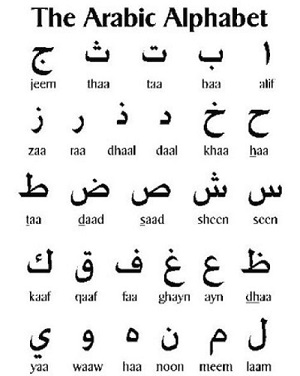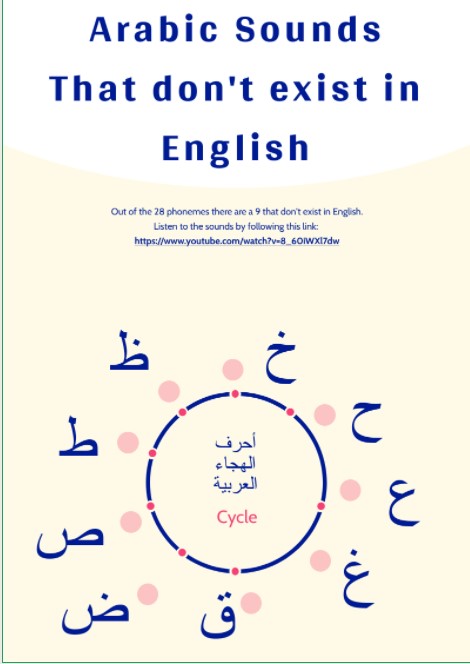Intro to the Arabic alphabet system:
There are 28 consonants in the Arabic alphabet. Out of these 28 consonants, there are 6 that don't connect with other consonants from the left side (disconnected consonants) while the rest of the consonants in the alphabet must connect with the others that follow to form a word. These 4 short videos below introduce the Arabic writing system and show learners how to write from right to left.
More details and examples are presented in those instructional videos.

Marhaba! Hello! Phonetics is the study of speech sounds in human language. This page introduces the Arabic consonants and sounds and how phonetics is articulated in the mouth. Moreover, how speech sounds are articulated by the human vocal tract. This page also contains main symbols and diacritical marks along with the three Arabic vowels used to transcribe human sounds in the International Phonetic Alphabet. This page is mostly directed to beginners, but also useful to intermediate learners.
Arabic alphabet and sounds
Unfamiliar consonants

Can you repeat this sentence 5 times? Palestinian tongue twister
[hazha lmich-mich mich min mich-michi-tna] sound [ ʃ -sh]
"This apricot is not from our apricot tree "
Can you repeat this sentence 3 times? MSA Arabic tongue twister
[Tabakh-na fi matbakhi-kom tabkha-tana] sound [t̪ˁ -t and x - kh]
We cooked in your kitchen our food
Can you repeat this sentence 2 times? Lebanese Arabic tongue twister
[Jibna LJibni Jibli shu Jabli Jimli] sound [ ʒ -n -l ]
"we've got the cheese bring me what he got me sentence".
Modern Standard Arabic vs. Colloquial Arabic
There are 25 countries where Arabic is used as the first official language. However, there are many other countries that use Arabic as the second or the third official language. The Modern Standard Arabic is the language that is taught at school. MSA is the language used in academia, print, media, government legislation, and law. Arabic colloquial dialects vary from region to region. Dialects vary greatly in pronunciation, vocabulary, and grammar. These differences are the result of hundreds of years of coevolution alongside local languages, customs, and traditions, as well as later external influences such as colonialism. The result is a rich, layered, and unique cultural reflection of a people and their history. To learn more about these dialects watch these videos.